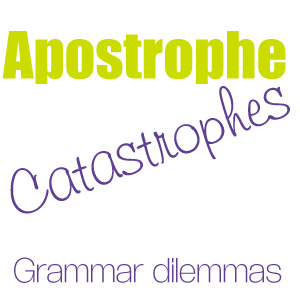
So, what makes a good blog post?
Let's look at a few key tips.
A killer title makes your visitors read on
Firstly, your killer title. We've spoken about that one
in this article - but a killer title is nothing without killer content!
So does the first para - if you've planned properly
What about that opening line or para? Does it have impact? A good method is to ask a question... and then reveal the answer as the blog post unfolds. Another way to grab your reader's attention from the first paragraph is to have a great one-liner or unexpected anecdote as your opening para.
Jeremy Clarkson is very good at this!
You can offer something exclusive, e.g.beginning your blog post with a claim such as "In this post I'm going to teach you how to save $50 a week on your grocery shopping." You do have to back up the claim with relevant information or follow up material if that is what you're promising, otherwise you'll lose readers or potentially become the target of bad press on social media channels (and remember that people spread bad news quicker than good).
Statistics are also a good starter. Couple that with a question - "Did you know that 99% of ginger cats are male?" - and you have a great opener.
Step back a bit - are you on target with the theme of your blog?
Before we get into content, let's step back a bit and consider what your blog is about. Is your blog consistent in what it addresses? If you market your blog as a photography or camera review, don't start getting off topic and talk about, for example, traffic in your street. Good and popular blogs are consistent, they have a theme.
Obviously if you have a business you're going to blog about what you know. If you're a project manager your topics will generally revolve around ways to improve project management. You may be an expert in your field and have plenty of knowledge to impart. If you have a retail site, introduce and review new products in your post - and of course include a link to the product in your online shop. For legal blogs comments on new legislation and how it affects their clients is an obvious one.
But what about personal blogs? What makes them successful? Again, it's sticking to one theme. Take, for example,
Lovely Bicycle! (The exclamation point belongs to the blog name.) Blogger Velouria started out around three years ago as a blogger who hadn't ridden a bicycle since her high school years. She'd decided to get back into riding. Initially the blog was about her test riding and choosing a bike. She had few followers. With a compelling writing style, and each post concentrating on a particular subject, Velouria shared her learning experience with her readers and gained followers by the day. Her followers consisted of experienced cyclists and people like herself, who were learning about bicycles. As Velouria learned more about many aspects of cycling and the engineering behind bikes her followers have grown and now she has monetized her blog and it's not uncommon for her to get more than 70 comments on some of her blog posts. Now THAT''s successful! Why has this blog worked? Because Velouria has shared her learning journey, has asked for help and comments, has investigated why some things work for her and some don't and shared her thoughts concisely - and not without a sense of humour either.
OK, so that's the theme sorted. Now what about those posts?
Now, back to content. Let's quickly look at a few pointers to keep in mind:
Keep your article between 350 and 1000 words. People don't want to read a novel but less than 350 words can be detrimental to your SEO.
Try and have a link every 120-200 words, it helps SEO.
Ascertain what your keywords are and make sure they are in the title and in the first sentence or at least para of the post. If you need assistance in determining your keywords consider using a service such as
SEO Scribe, which does help you write a good post.
Use your keywords wisely. Ideally you shouldn't use any keyword more than ten times per blog post, otherwise your post could be deemed as spam.
Use H3 and H4 tags - sub-headings in other words. Search engines love them.
We all know that regular posts help raise your SEO, but there is no excuse for writing an article that doesn't have a point or a reason for being just to put your weekly blog post out. So, your post must have a reason for existing. Don't write for the sake of writing. Give your reader a reason for reading your post. Having said that, your articles should each address individual topics, or points. If you have to, divide your posts up into two or three posts if you have two or three strong ideas or points in one post.
Encourage your readers to get involved - to comment, to give their opinion, share their experiences. In other words, a call to action. Ask a question of your readers. Yes, I know I've covered that earlier where you could ask a question and give the answer, but you could ask a question and ask your readers to supply answers.
If you are selling something, ask people to buy - don't be shy! But don't do the hard sell either. At the least ask people to simply click on a social media share button if they liked your post. We are all so used to clicking "Like" it's no hardship.
Once you've written the first draft, do edit and proofread. Check that you haven't overused your keywords. Check your grammar, check your spelling (remembering that spellchecker can sometimes turn your sentence into something unintelligible). If you are unsure, run it past a colleague or ask a proof reader like me to help out.
Print your article out and read through it - are you putting your point across, clearly? Do you have a call to engagement from your readers? Does it all flow well? Overall, does it make a point? Does it have a reason to be published?
A picture is worth...
Yeah, we know. Those 1000 words I mentioned earlier. So do use an image if you have one which depicts your topic. Feel free to use more than one, particularly if you're writing a personal blog as opposed to a business blog. Give your image an ALT tag so that readers with impaired vision can have its title read out to them. ALT tags help SEO too.
You've hit publish. Now what?
Ah, this is a topic for another post - getting your article out there on social media and other marketing tools. After all, this post is about writing a post, so I'll be sticking on topic with this one!
As for this topic - has it helped you? Let me know and leave a comment below.
 It’s the verbal equivalent of The Teenage Eyeroll, a nasty little phrase which makes me grit my teeth every time I hear it: ‘I know, right?’
There’s a vast difference between ‘I know’, and ‘I know, right?’. ‘I know’ tells me that the person I’m chatting to understands what I’m saying or agrees with me. That ‘right?’ tagged on the end instead conveys this to me: I’m superior to you, I know more about the subject we’re talking about than you do, and I’m not interested in your point of view, so you can shut up right now.
It’s rude. It’s condescending.
Earlier this week I was watching Anh Do’s Brush With Fame on the ABC, and Anh’s guest was Kate Ceberano. I’ve always admired Kate; she’s talented, funny and gorgeous. However, I was shocked to hear her say, “I know, right?” when she and Anh were discussing their respective appearances on Dancing With The Stars and the hectic and arduous rehearsals they both undertook. Anh didn’t even blink. I would have been putting my palette knife down and ending the conversation right there. Sorry, Kate, I’ve lost a wee bit of respect for you. That ‘I know, right?’ made you sound like you didn’t want to hear Anh’s anecdote, that you weren’t interested in it. Rude? You betcha.
Should we ever meet, dear reader, and in the course of our conversation you say, ‘I know, right?’ to me, please don’t be offended if I slap you. I just may not be able to resist it.
It’s the verbal equivalent of The Teenage Eyeroll, a nasty little phrase which makes me grit my teeth every time I hear it: ‘I know, right?’
There’s a vast difference between ‘I know’, and ‘I know, right?’. ‘I know’ tells me that the person I’m chatting to understands what I’m saying or agrees with me. That ‘right?’ tagged on the end instead conveys this to me: I’m superior to you, I know more about the subject we’re talking about than you do, and I’m not interested in your point of view, so you can shut up right now.
It’s rude. It’s condescending.
Earlier this week I was watching Anh Do’s Brush With Fame on the ABC, and Anh’s guest was Kate Ceberano. I’ve always admired Kate; she’s talented, funny and gorgeous. However, I was shocked to hear her say, “I know, right?” when she and Anh were discussing their respective appearances on Dancing With The Stars and the hectic and arduous rehearsals they both undertook. Anh didn’t even blink. I would have been putting my palette knife down and ending the conversation right there. Sorry, Kate, I’ve lost a wee bit of respect for you. That ‘I know, right?’ made you sound like you didn’t want to hear Anh’s anecdote, that you weren’t interested in it. Rude? You betcha.
Should we ever meet, dear reader, and in the course of our conversation you say, ‘I know, right?’ to me, please don’t be offended if I slap you. I just may not be able to resist it.
 It’s the verbal equivalent of The Teenage Eyeroll, a nasty little phrase which makes me grit my teeth every time I hear it: ‘I know, right?’
There’s a vast difference between ‘I know’, and ‘I know, right?’. ‘I know’ tells me that the person I’m chatting to understands what I’m saying or agrees with me. That ‘right?’ tagged on the end instead conveys this to me: I’m superior to you, I know more about the subject we’re talking about than you do, and I’m not interested in your point of view, so you can shut up right now.
It’s rude. It’s condescending.
Earlier this week I was watching Anh Do’s Brush With Fame on the ABC, and Anh’s guest was Kate Ceberano. I’ve always admired Kate; she’s talented, funny and gorgeous. However, I was shocked to hear her say, “I know, right?” when she and Anh were discussing their respective appearances on Dancing With The Stars and the hectic and arduous rehearsals they both undertook. Anh didn’t even blink. I would have been putting my palette knife down and ending the conversation right there. Sorry, Kate, I’ve lost a wee bit of respect for you. That ‘I know, right?’ made you sound like you didn’t want to hear Anh’s anecdote, that you weren’t interested in it. Rude? You betcha.
Should we ever meet, dear reader, and in the course of our conversation you say, ‘I know, right?’ to me, please don’t be offended if I slap you. I just may not be able to resist it.
It’s the verbal equivalent of The Teenage Eyeroll, a nasty little phrase which makes me grit my teeth every time I hear it: ‘I know, right?’
There’s a vast difference between ‘I know’, and ‘I know, right?’. ‘I know’ tells me that the person I’m chatting to understands what I’m saying or agrees with me. That ‘right?’ tagged on the end instead conveys this to me: I’m superior to you, I know more about the subject we’re talking about than you do, and I’m not interested in your point of view, so you can shut up right now.
It’s rude. It’s condescending.
Earlier this week I was watching Anh Do’s Brush With Fame on the ABC, and Anh’s guest was Kate Ceberano. I’ve always admired Kate; she’s talented, funny and gorgeous. However, I was shocked to hear her say, “I know, right?” when she and Anh were discussing their respective appearances on Dancing With The Stars and the hectic and arduous rehearsals they both undertook. Anh didn’t even blink. I would have been putting my palette knife down and ending the conversation right there. Sorry, Kate, I’ve lost a wee bit of respect for you. That ‘I know, right?’ made you sound like you didn’t want to hear Anh’s anecdote, that you weren’t interested in it. Rude? You betcha.
Should we ever meet, dear reader, and in the course of our conversation you say, ‘I know, right?’ to me, please don’t be offended if I slap you. I just may not be able to resist it.


 I was in year 4 at school when the concept of quotation marks was introduced to our class. Because I was a smartypants I had been writing stories for years using quote marks to contain my characters' speech, and the initial lesson on quotation marks was a validation of what I'd already been doing. I had taught myself by reading novels and noticing how quote marks went outside commas and periods. It all seemed pretty logical. And it is.
So here's a quick lowdown on how to use quote marks.
I was in year 4 at school when the concept of quotation marks was introduced to our class. Because I was a smartypants I had been writing stories for years using quote marks to contain my characters' speech, and the initial lesson on quotation marks was a validation of what I'd already been doing. I had taught myself by reading novels and noticing how quote marks went outside commas and periods. It all seemed pretty logical. And it is.
So here's a quick lowdown on how to use quote marks.  OK, hands up if you've heard of The Greengrocer's Apostrophe. This is an apostrophe incorrectly used with an 'S' after it to form a plural of a word. You'll see it not only in the greengrocer's shop but widely in the retail sector, online and in print advertising. Here are some samples:
OK, hands up if you've heard of The Greengrocer's Apostrophe. This is an apostrophe incorrectly used with an 'S' after it to form a plural of a word. You'll see it not only in the greengrocer's shop but widely in the retail sector, online and in print advertising. Here are some samples:
 The English language is a glorious thing, allowing us to express ourselves with passion or dispassion, with brevity or at great length. It can also be a minefield full of potential grammatical errors or confusion.
For example, when do you use 'that' in a sentence, and when do you use 'which'? Both words are pronouns used to introduce clauses in a sentence.
Let's have a look at when only 'that' will do:
The English language is a glorious thing, allowing us to express ourselves with passion or dispassion, with brevity or at great length. It can also be a minefield full of potential grammatical errors or confusion.
For example, when do you use 'that' in a sentence, and when do you use 'which'? Both words are pronouns used to introduce clauses in a sentence.
Let's have a look at when only 'that' will do:

 Remember the days before smartphones? When normal mobile phones could only send short text messages? Was it the short messages or the sheer frustration of having to tap a key several times to use the letter you wanted which led to the abbreviation abomination known as txt-speak? I suspect it was a bit of both.
Even in those early days, I resisted using abbreviations such as 'u' for 'you'. Whenever possible, I spell words out. I may, on occasions where I'm in a tearing hurry, send a text along the lines of "Ok, c u!" but oh dear, it's just not me.
My pet hate in txt-speak is using 'ur' for 'your'.
Remember the days before smartphones? When normal mobile phones could only send short text messages? Was it the short messages or the sheer frustration of having to tap a key several times to use the letter you wanted which led to the abbreviation abomination known as txt-speak? I suspect it was a bit of both.
Even in those early days, I resisted using abbreviations such as 'u' for 'you'. Whenever possible, I spell words out. I may, on occasions where I'm in a tearing hurry, send a text along the lines of "Ok, c u!" but oh dear, it's just not me.
My pet hate in txt-speak is using 'ur' for 'your'. 